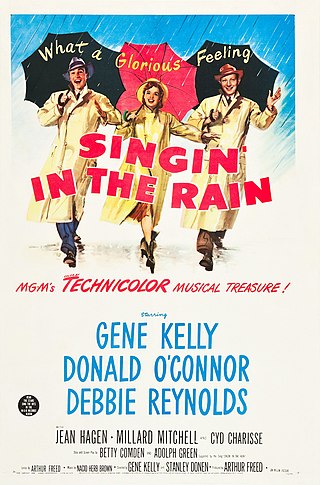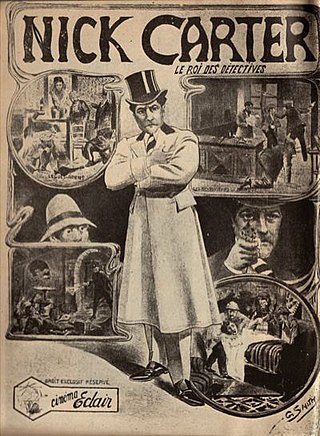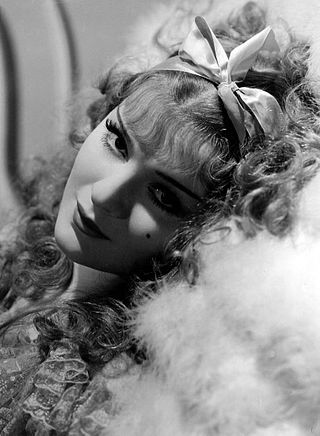
Musical film is a film genre in which songs by the characters are interwoven into the narrative, sometimes accompanied by dancing. The songs usually advance the plot or develop the film's characters, but in some cases, they serve merely as breaks in the storyline, often as elaborate "production numbers".

Universal City Studios LLC, doing business as Universal Pictures is an American film production and distribution company owned by NBCUniversal, a division of Comcast.
The decade of the 1920s in film involved many significant films.

Mary Tomlinson, professionally known as Marjorie Main, was an American character actress and singer of the Classical Hollywood period, best known as a Metro-Goldwyn-Mayer contract player in the 1940s and 1950s, and for her role as Ma Kettle in 10 Ma and Pa Kettle movies. Main started her career in vaudeville and theatre, and appeared in film classics, such as Dead End (1937), The Women (1939), Dark Command (1940), The Shepherd of the Hills (1941), Meet Me in St. Louis (1944), and Friendly Persuasion (1956).

A mystery film is a genre of film that revolves around the solution of a problem or a crime. It focuses on the efforts of the detective, private investigator or amateur sleuth to solve the mysterious circumstances of an issue by means of clues, investigation, and clever deduction. By 2022, mystery films are generally referred to as detective fiction.
This is a list of lists of horror films. Often there may be considerable overlap particularly between horror and other genres.
The star system was the method of creating, promoting and exploiting stars in Hollywood films from the 1920s until the 1960s. Movie studios would select promising young actors and glamorise and create personas for them, often inventing new names and even new backgrounds. Examples of stars who went through the star system include Cary Grant, Joan Crawford, and Rock Hudson.

Classical Hollywood cinema is a term used in film criticism to describe both a narrative and visual style of filmmaking that first developed in the 1910s to 1920s during the later years of the silent film era. It then became characteristic of American cinema during the Golden Age of Hollywood, between roughly 1927 and 1960. It eventually became the most powerful and pervasive style of filmmaking worldwide.
A studio system is a method of filmmaking wherein the production and distribution of films is dominated by a small number of large movie studios. It is most often used in reference to Hollywood motion picture studios during the early years of the Golden Age of Hollywood from 1927 to 1948, wherein studios produced films primarily on their own filmmaking lots with creative personnel under often long-term contract, and dominated exhibition through vertical integration, i.e., the ownership or effective control of distributors and exhibition, guaranteeing additional sales of films through manipulative booking techniques such as block booking.
A list of the most notable films produced in the Cinema of Mexico split by decade of release. For an alphabetical list of articles on Mexican films see Category:Mexican films.
Film title design is a term describing the craft and design of motion picture title sequences. Since the beginning of the film form, it has been an essential part of any motion picture. Originally a motionless piece of artwork called title art, it slowly evolved into an artform of its own.

The cinema of Wales comprises the art of film and creative movies made in Wales or by Welsh filmmakers either locally or abroad. Welsh cinema began in the late-19th century, led by Welsh-based director William Haggar. Wales continued to produce film of varying quality throughout the 20th century, in both the Welsh and English languages, though indigenous production was curtailed through a lack of infrastructure and finance, which prevented the growth of the industry nationally. Despite this, Wales has been represented in all fields of the film making process, producing actors and directors of note.

Anna Sten was a Ukrainian-born American actress. She began her career in stage plays and films in the Soviet Union, then traveled to Germany, where she starred in several films. Her performances were noticed by film producer Samuel Goldwyn, who brought her to the United States with the aim of creating a screen personality to rival Greta Garbo. After a few unsuccessful films, Goldwyn released her from her contract. She continued to act occasionally until her final film appearance in 1962.

Rebekah Isabelle Laemmle, known professionally as Carla Laemmle, was an American actress and dancer, and the niece of Universal Pictures studio founder Carl Laemmle. As an actress/dancer, she is known primarily for her roles in The Phantom of the Opera (1925) and Dracula (1931). At the time of her death, she was one of the last surviving actors of the silent film era, with her career spanning nearly 90 years, also with one of the longest gaps.

Bob Steele was an American actor. He also was billed as Bob Bradbury Jr..

Estelle Brody was an American actress who became one of the biggest female stars of British silent film in the latter half of the 1920s. Her career was then derailed by a series of ill-advised decisions and she disappeared from sight for many years before re-emerging between the late 1940s and the 1960s in smaller supporting film and television roles.









